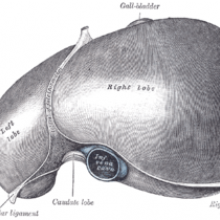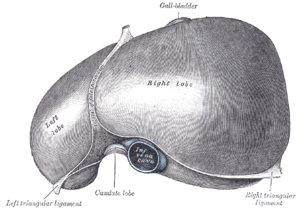In this Naked Scientists NewsFlash, we find out how to fight Fido's fleas with a fungus and why stressed men take more risks but stressed women take fewer. Plus, the dangers of quiet cars and how to predict if hepatitis B will lead to liver cancer.
In this episode

No fleas on me
A chemical made by a fungus might hold the key to a new anti-flea treatment for dogs and cats.
 Writing in the Journal of Medicinal Chemistry, Merck scientist Peter Meinke and his colleagues explain how they have developed an orally-active anti-flea and tick drug based on a chemical called nodulisporic acid, which is a metabolite produced by the nodulisporium fungus. These fungi live on dead or dying plant matter and are generally not a threat to humans but the nodulisporic acid the make has been shown in the past to behave as a neurotoxin in insects and other invertebrates. Amongst these vulnerable species the chemical blocks ion channels that are critical for the process of neurotransmission, leading to paralysis.
Writing in the Journal of Medicinal Chemistry, Merck scientist Peter Meinke and his colleagues explain how they have developed an orally-active anti-flea and tick drug based on a chemical called nodulisporic acid, which is a metabolite produced by the nodulisporium fungus. These fungi live on dead or dying plant matter and are generally not a threat to humans but the nodulisporic acid the make has been shown in the past to behave as a neurotoxin in insects and other invertebrates. Amongst these vulnerable species the chemical blocks ion channels that are critical for the process of neurotransmission, leading to paralysis.
As vertebrates, including mammals like humans, dogs and cats, lack the ion channel targeted by nodulisporic acid the compound is harmless to us. The problem is how to make sufficient quantities of the chemical. It is a large molecule comprising a complex series of interlocking rings of carbon atoms and other active groups including oxygen and nitrogen, which means that it is very difficult to make in a test tube, at least in a cost-effective manner. The team therefore set about modifying the chemical structure to arrive at a molecule that retained or even boosted the insect-killing capacity of the original chemical, but was simpler and cheaper to make.
They achieved this by retaining the core of the nodulisporic acid molecule, which has been shown to be critical to the agent's activity, and then tacking on a range of secondary chemical groups. They were able to produce initially 335 candidate compounds, which were whittled down to a final fourteen by testing them for toxicity against fleas and for safety in mice. These fourteen compounds were then tested in dogs and cats by administering a single dose of the agent, exposing the animals to fleas at various time points and then combing the fleas back out later to counting how many had died.
Remarkably, a single dose of one of the compounds, N-tert-butyl nodulisporamide, was effective at keeping animals flea-free for six to eight weeks, and it also worked against ticks too.
"No commercial product has the unique oral properties of nodulisporamide, and its systemic efficacy profile compares favourably to currently marketed topical agents," say the researchers.

Stressed Men Take More Risks
Stressed men take more risks, while stressed women play it safe, according to research published in the Journal PLoS One this week.
 Nichole Lighthall, from the University of Southern California Davis School of Gerontology, asked volunteers to play a computer game designed to measure risk taking, called the Balloon Analogue Risk Task. In the game, participants pump up a balloon, winning a small amount of money per pump, until they stop and collect the cash or the balloon pops and they lose it all. The balloon would pop at random somewhere between 1 pump and 128 pumps, so for each pump the risk of losing increases and the potential gain decreases.
Nichole Lighthall, from the University of Southern California Davis School of Gerontology, asked volunteers to play a computer game designed to measure risk taking, called the Balloon Analogue Risk Task. In the game, participants pump up a balloon, winning a small amount of money per pump, until they stop and collect the cash or the balloon pops and they lose it all. The balloon would pop at random somewhere between 1 pump and 128 pumps, so for each pump the risk of losing increases and the potential gain decreases.
Then they did the same test again with a group of volunteers under stress. They stressed them out by making them hold their hands in ice cold water, and measured the levels of the stress hormone cortisol so they were certain this was a stressful situation.
Under stress, men take more risks and women are more risk averse, even though they take similar risks when not stressed. Women inflated the balloon an average of 32 times, over 30% less than men, who pumped an average of 48 times. This may correlate to risky behaviours in the real world, such as gambling, smoking, unsafe sex and illegal drug use.
So why should this be?
"Evolutionarily speaking, it's perhaps more beneficial for men to be aggressive in stressful, high-arousal situations when risk and reward are involved," said Dr Lighthall. "Applied to financial risk taking, it's akin to competition for territory or other valuable resources."
So men may have evolved to respond to stress with a flight or flight response - taking bigger risks, while women evolved a more conservative response, which could be beneficial as taking risks in pursuit of resources could "endanger the lives of dependent offspring."

A rush of blood to the head
We often talk about angry people as having had a metaphorical sudden rush of blood to the head, but new research from scientists in the US, published in the journal Cardiovascular Ultrasound suggests that it might actually be true.
 This is research by Tasneem Naqvi and Hahn Hyuhn, who were using ultrasound to look at blood flow in the brain in response to mental stress, and also how the main artery to the brain, the carotid, responds under these circumstances. They studied 10 healthy young people, aged 19 to 27, 20 older people, aged 38 to 60, and 28 people with high blood pressure.
This is research by Tasneem Naqvi and Hahn Hyuhn, who were using ultrasound to look at blood flow in the brain in response to mental stress, and also how the main artery to the brain, the carotid, responds under these circumstances. They studied 10 healthy young people, aged 19 to 27, 20 older people, aged 38 to 60, and 28 people with high blood pressure.
The researchers set the volunteers a series of tasks designed to cause mental stress, including reading, maths tests, and remembering situations when they were angry, while using ultrasound to monitor the effects on blood flow in the brain, blood pressure, and heart rate.
The scientists discovered that in healthy volunteers, the blood flow to the brain increased under mental stress, through a process called vasodilation - where the blood vessels get wider to allow more blood through. But in patients with high blood pressure, known as hypertension, they didn't see this vasodilation, and found no significant changes in blood flow in the brain.
Obviously, this is only a very small study, but it does have some interesting implications. The researchers suggest that the lack of vasodilation in people with high blood pressure could be a risk factor for strokes. It's known that a lack of vasodilation in the heart can lead to an increased risk of something called myocardial ischaemia - a lack of oxygen to the heart muscle.
It will be interesting to see if the lack of vasodilation in people with high blood pressure could increase the risk of stroke - which is a lack of blood and oxygen in certain parts of the brain. And the results also raise the question as to whether a lack of blood flow to the brain could affect mental performance in people with high blood pressure. So the work raises lots of future avenues for research.

Electric Cars too Quiet
Electric cars have been accused of being too quiet, and posing a risk to the vision impaired, and prompting the Japanese government to review whether to add a noise making device.
 Hybrid vehicles make very little noise when running on the batteries, and have become the country's top selling cars in recent months. A new, cheaper Toyota prius has only been on sale since May, and already received over 200,000 orders, fast becoming the bestselling car on the domestic market.
Hybrid vehicles make very little noise when running on the batteries, and have become the country's top selling cars in recent months. A new, cheaper Toyota prius has only been on sale since May, and already received over 200,000 orders, fast becoming the bestselling car on the domestic market.
The ministry of transport has launched a panel of scholars, vision impaired groups, consumers, police and car manufacturers to discuss how to get around this issue.
No decision has been made on what noise should be made, but they need to find a way to raise caution in those that rely on sound, while being fair to residents who live along roads. They're expected to decide by the end of the year.
I think they should broadcast episodes of the Naked Scientists podcast, so it will be audible, entertaining and educational!

Liver cancer gene link
There are some interesting new results out this week about the link between Hepatitis B infection and cancer, published in the Journal of the National Cancer Institute. Hepatitis B infection is relatively rare in the West, but it's a big problem in sub-Saharan Africa and Asia.
 And the bad thing about Hep B infection is that it increases the risk of the most common type of liver cancer called hepatocellular carcinoma. Again, this type of cancer is relatively rare in the West, but it's actually the fifth most common cancer worldwide, and the third most common cause of cancer death. More than eight out of ten cases are in East Asia or sub-Saharan Africa, and most of these are linked to the Hepatitis B infection.
And the bad thing about Hep B infection is that it increases the risk of the most common type of liver cancer called hepatocellular carcinoma. Again, this type of cancer is relatively rare in the West, but it's actually the fifth most common cancer worldwide, and the third most common cause of cancer death. More than eight out of ten cases are in East Asia or sub-Saharan Africa, and most of these are linked to the Hepatitis B infection.
It's a bit of a mystery as to why some people are more susceptible to developing liver cancer when they're infected with hep B than others. And now a new analysis from Guangwen Cao and his team in Shanghai has shed some light on this mystery.
The researchers did something known as a meta-analysis, looking at over 40 studies that included more than 11,500 people infected with Hepatitis B, 2,801 of whom had liver cancer. They were looking at whether mutations in the virus DNA could affect the chances of the carrier developing cancer or not. There have been some previous studies looking at this, but they've been small, and the results haven't been conclusive.
But by collecting together the results from many studies, Cao and his team were able to discover that four certain mutations in Hep B were linked to the development of liver cancer, and were also more likely to crop up in the virus as hepatitis infection progressed from an infection without any symptoms to liver cirrhosis, and then on to cancer.
The researchers suggest that patients with chronic hepatitis B infection should be regularly screened for mutations in the virus, which might help doctors identify those who are likely to go on to get cancer. They can then be offered more aggressive anti-viral treatment
At the moment, there is some debate as to how strongly people should be treated with anti-viral drugs, due to the risks of developing drug resistance, as well as side effects, along with the cost of the drugs. So being able to identify those patients who are at most risk of developing liver cancer, and treating them first, could be a real help.
You can also listen to our special World Hepatitis Day Podcast...

20:39 - The World Conference of Science Journalists
The World Conference of Science Journalists
Laura Soul
Chris - Earlier this week, it was the World Conference of Science Journalists. Nearly a thousand science writers and broadcasters from all over the world got together in Westminster, not at the houses of Westminster, but down just the road from there, to help each other out and to share some ideas and here's Laura Soul to tell us a bit more.
 Laura - This week, London played host to the world's biggest conference for science journalists. Science writers and broadcasters from all corners of the globe gathered to discuss the challenges of reporting scientific stories in a media who are obsessed with celebrity and gossip. Sallie Robins, Conference Co-Director explained why this year's conference was particularly important.
Laura - This week, London played host to the world's biggest conference for science journalists. Science writers and broadcasters from all corners of the globe gathered to discuss the challenges of reporting scientific stories in a media who are obsessed with celebrity and gossip. Sallie Robins, Conference Co-Director explained why this year's conference was particularly important.
Sallie - The World Conference of Science Journalists is an international gathering of journalists from around the world. So, they can all come together and look at the profession of science journalism, what will happen in the future, how the jobs are changing, and who consider scientific issues that are key, right across the world. There's some parts in the world particularly in the United States, it does seem to be a profession in crisis, very few staff positions left in science journalism on newspapers, lots of newspapers folding all together. By contrast, in other parts of the world, we heard from an Arab science journalist and, you know, things are very much going on up there and in Africa. There's a bid increase in the profession. So, it's so quite interesting contrasts. So, I think a lot of people are interested to know where things probably go and what future might hold for them.
Laura - At first glance, it may seem the challenges for journalists in Africa have little in common with those in the West. But Ake Gimo from the Development Communications Network in Nigeria, feels that science reporting needs a global perspective.
Ake - There's a lot of commonalities when it comes to issues around the world. Issues of science is the essence of life and this is an opportunity to learn what's really going on and how do we address those issues. We think globally, but we have to act locally. That is the essence of the whole thing.
Laura - As well as facing future challenges, the conference was a chance to celebrate the success of journalists who've shaped the world. Andre Picard of Canada's Globe and Mail helped to expose one of Canada's biggest public health scandals.
Andre - I wrote about tainted-blood a lot. It's a story of blood that was infected with HIV and with hepatitis, and this became a big political scandal in Canada because of government in actions and cover-ups and document shredding related to this. But it started out as a medical issue, became a big social and political issue for us. What we found was the worst ever health scandal in Canada that about 4,000 people infected with HIV AIDS and more than 10,000 with hepatitis. So, very large numbers of people infected through a product that was supposed to save their lives which is blood and blood products.
Laura - This year's conference, saw delegates invited to London but the venue for the 2011 conference is somewhat more exotic. Cairo, Pallab Ghosh, BBC science correspondent and outgoing President of the World Federation of Science Journalists explained why Egypt was the top choice.
Pallab - Well, we had four really strong bids, Finland, Uganda, Kenya, and a joint bid by the Arab Science Foundation, and the American Science Association. It was a difficult choice but at the end of the day, one of the things that was important to the board was the culture that previous conferences it build which is about critical challenging science journalism. The value added that science journalist bring is to ask the awkward questions. We felt the vision provided by the joint U.S. and Arab bid would provide that.
Laura - As the host of the next conference becomes the president of the World Federation, Pallab passes his title on to Nadia El-Awady, who have high hopes for the Cairo conference.
Nadia - We're going to bring people to a different part of the world for this conference. For the past three conferences, it's been in the developed world. This will be a chance to bring people to a completely different part of the world where we're going to be representing the Arab world and Africa, we're going to be working closely with other Arab countries and other African countries. We really hope that the journalists when they come to the country and then hopefully, would be able to visit the region afterwards will find different kinds of stories to cover. They'll also be able to learn how we, as journalists in our part of the world work, what kind of challenges we face and how we overcome these challenges.
Laura - Delegates at the World Conference of Science Journalists had a great opportunity to meet people from all over the globe and we'll return home with fresh ideas to improve science reporting, which will be essential in helping people to face the challenges we will see in the future.









Comments
Add a comment